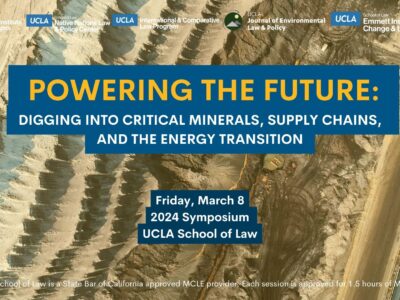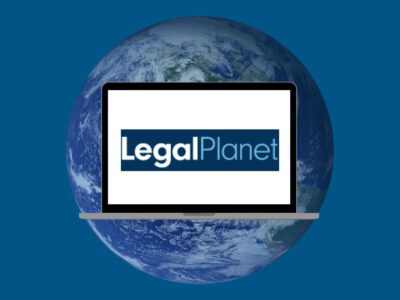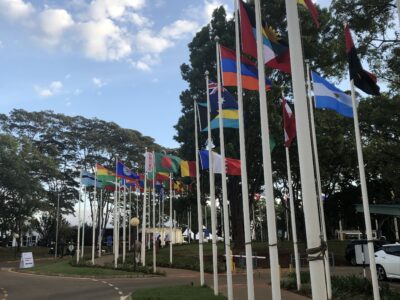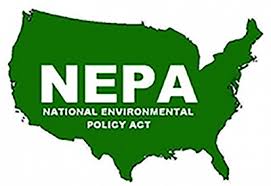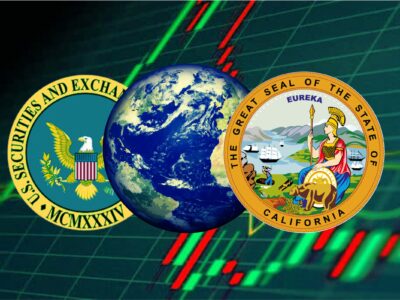The Changing Politics of Coal
Coal has gone from a national conservative rallying cry to a niche state concern.
The “War Against Coal” was a major conservative theme eight years ago. Now it seems almost forgotten even by Donald Trump, who was once coal’s caped crusader. But although protecting coal production is no longer much of a national issue, keeping coal-fired power plants open has percolated as an issue at the state level. It remains to be seen how long increasingly uneconomic coal generators remain online. In 2016, Trump was all in for coal. Donning a miner’...
CONTINUE READINGCritical Insights on the Mineral Boom
In the race for critical minerals, the challenges, tradeoffs, and potential winners are becoming clear. Insights from the Emmett Institute's "Powering the Future" symposium.
A couple hundred miles north of the Las Vegas strip at Rhyolite Ridge you’ll find a dusty yellow wildflower called Tiehm’s buckwheat that grows nowhere else in the world. But this flower sits atop a massive, untapped lithium reserve that would help the U.S. transition to cleaner energy. Now, what if you had to choose between approving this much-needed mining operation and preserving this unique flower? In a way, you do have to choose. We all do. We’re in a...
CONTINUE READINGReplacing McConnell
If the GOP flips the Senate, who will lead them on environmental issues?
Who will lead the Senate in 2025? The odds are that it will be a Republican. Democrats have a slim margin and face some close races, while all the GOP seats seem secure. That makes the question of who will replace Mitch McConell as GOP leader all the more important for climate and energy policy. Here are two top possibilities. Neither of them is by any stretch of the imagination an environmentalist. Yet you have to say one thing in their favor: neither is half as ...
CONTINUE READINGHow to Cooperate with China on Climate
A conversation with Joanna Lewis about what has worked, and what hasn’t, when it comes to bilateral climate cooperation with China.
China is the world’s largest producer of both CO2 emissions and green technology to cut those emissions. It installed more solar panels last year than the U.S. has in its history, and yet keeps building coal-fired plants too. And Chinese officials just announced that the country will accelerate the construction of solar, wind and hydropower. So, China plays an outsized and even paradoxical role in deploying clean energy technologies to address the climate crisis. ...
CONTINUE READINGStates May Be Warming to Green Amendments
At least 10 states, including New Jersey and California, are considering constitutional guarantees to a clean environment and stable climate after Montana’s landmark climate trial.
Last week, New Jersey lawmakers and a variety of stakeholders crammed into a statehouse committee room for a relatively rare legislative hearing. This 2-hour hearing centered on New Jersey’s proposed green amendment, which committee chair Senator Bob Smith described as “a very controversial topic” as he gaveled in the meeting. This green amendment would add a constitutional guarantee to a healthy, clean environment. Advocates have been pushing for such a hearin...
CONTINUE READINGFifteen Years of Legal Planet
5700 blog posts later, we’re still speaking — if not “truth to power”— then our best approximation of truth, to anyone who’ll listen.
A decade and a half ago, the law school here announced the launch of a new environmental law blog by Berkeley and UCLA. The March 11, 2009 press release began: “The University of California, Berkeley, School of Law (Berkeley Law) and UCLA School of Law today announced the launch of a new blog, Legal Planet, which provides insight and analysis on climate change, energy, and environmental law and policy. This collaborative blog draws upon the individual research strengt...
CONTINUE READINGThe global conversation about solar geoengineering just changed at the UN Environment Assembly. Here’s how.
Duncan McLaren and Olaf Corry reflect on the implications of the UNEA-6 non-decision on solar radiation modification for research and governance
As we wrote in part 1, a Swiss-led proposal to the UN Environment Assembly (UNEA) to establish an expert group on solar radiation management (SRM) proved divisive and was eventually withdrawn. Here we explore why, and what that means for any global conversation about SRM. SRM has long generated concerns that, as a powerful lever on the Earth system, it could have unwanted side-effects and generate political and ethical risks, as well as lowering temperatures. But rule...
CONTINUE READINGCountries failed to agree first steps on solar geoengineering at the UN. What went wrong?
Duncan McLaren and Olaf Corry observed as diplomats in Nairobi wrestled with a resolution on solar radiation management
In the last weeks, diplomats from all over the world were negotiating more than twenty draft resolutions at the UN Environment Assembly (UNEA). The Assembly is a biennial intergovernmental meeting which sets the global environmental agenda. It also sets the strategy for the UN Environment Programme (UNEP), and outlines policy responses to address emerging environmental challenges. In amongst proposals regarding plastic pollution, air quality, pesticides and circular ec...
CONTINUE READINGDeciphering NEPA 2.0
Here’s everything you wanted to know about the “New NEPA” but were afraid to ask.
NEPA was long an island of legal stability, standing almost unamended for over a half century. Then in the summer of 2023, everything changed. As a rider on the agreement to raise the debt ceiling, Congress extensively rewrote and expanded NEPA, gifting us with a new statutory regime. As I’ve written before -- and discuss in more detail in a forthcoming article -- the new statute is something of a disaster in terms of legal drafting. When the 2023 amendments...
CONTINUE READINGThe SEC’s Watered-Down Climate Rule
Now that the SEC has approved its limited climate disclosure rule, the spotlight is back on California’s more stringent disclosure laws that still need backing.
After months of discussion, the U.S. Securities and Exchange Commission (SEC) voted 3-2 to adopt climate reporting standards that will mandate publicly-traded companies disclose some of their greenhouse gas emissions. The SEC’s rule was proposed way back in 2022, and the initial draft would have required companies to disclose their “Scope 3” supply chain emissions, in addition to the “Scope 1” and “Scope 2” direct and indirect emissions the final rule inclu...
CONTINUE READING




